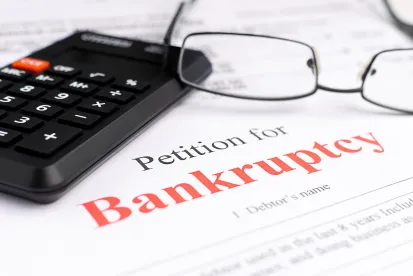The House has passed a bill that will now go to the President to sign into law that raises the eligible debt ceiling for Subchapter V of Chapter 11 to $7,500,000. Small businesses with up to $7,500,000 in noncontingent, liquidated debts will once again be eligible for relief under Subchapter V for another two years. The ceiling was previously raised to $7,500,000 as part of the CARES Act in 2020, but lapsed back to $3,024,725 as of April 1, 2022.
On June 7, 2022, the United States House of Representatives passed amended S. 3823 (previously passed by the Senate), the “Bankruptcy Threshold Adjustment and Technical Corrections Act,” which retroactively preserves the $7,500,000 debt threshold to qualify for Subchapter V of Chapter 11 of the Bankruptcy Code for an additional two years. The bill was passed by a vote of 392-21 (14 not voting), and will now head to President Biden. Subchapter V was initially added to the Bankruptcy Code in February 2020 through the Small Business Reorganization Act of 2019, as an innovative restructuring platform for small businesses with a noncontingent liquidated debt of $2,725,625 or less. However, that debt ceiling was increased in March 2020 to $7,500,000 as a COVID-19 relief measure implemented through the CARES Act, Pub. L. No. 116-136 (2020) and subsequently extended through March 27, 2022. As a result of the CARES Act’s sunset provisions, the debt limit then reverted back to $3,024,725 (a product of annual lock-step increases to account for inflation) on April 1, 2022.
While efforts to avoid this lapse had been ongoing, this most recent action follows more than a month of inactivity. The bill had previously been passed in the Senate by Unanimous Consent on April 7, 2022. However, the House was in recess through April 26, and with no news forthcoming thereafter, the debt limit had an uncertain fate despite widespread support for the increase. Instead, small business debtors can now plan to avail themselves of Subchapter V’s streamlined provisions into 2024 under the heightened debt limits.[1]
FOOTNOTES
[1] In addition to the debt limit, the bill makes a number of technical modifications concerning debtor affiliates and other clarifications, while also making important changes to eligibility under Chapter 13 by changing the definition of an eligible debtor to “an individual with regular income that owes, on the date of the filing of the petition, noncontingent, liquidated debts of less than $2,750,000 or an individual . . . and such individual’s spouse . . . that owe . . . noncontingent, liquidated debts that aggregate less than $2,750,000”. This not only raises the absolute limit on the amount of debt that an individual may hold and still be eligible for Chapter 13 relief, but also simplifies the determination by making reference only to “noncontingent, liquidated debts.” The previous text of 11 U.S.C. § 109(e) (prior to this amendment) required that an individual debtor not exceed separate ceilings for unsecured (previously $465,275) and secured debts (previously $1,395,875). Like the Subchapter V increase, the increased debt limits for Chapter 13 will also sunset two years after the date of enactment of the bill.





 />i
/>i

